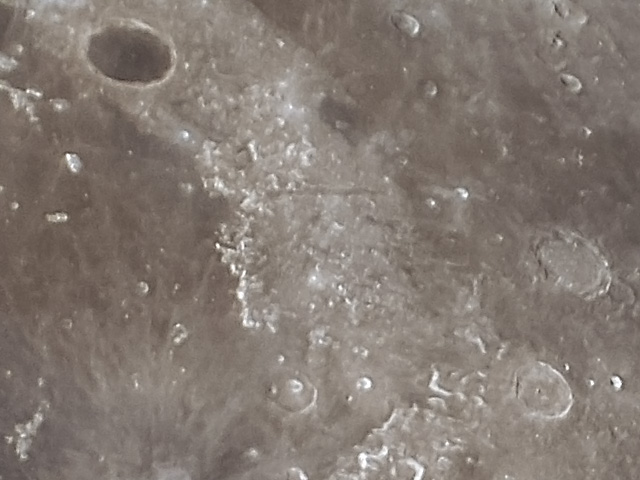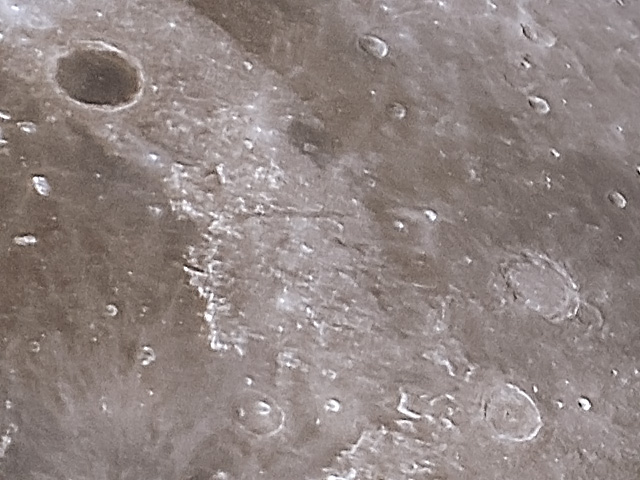- Images
- Blog
- Tools
- Questar
- The Questar telescope
- Questar resource links
- Search for Questar info
- 172mm Focal Reducer
- Afocal adapter for point and shoot camera
- Camera adapter lengths
- Camera adapter threading
- Camera connection
- Camera focusing
- Custom counterweight
- Drift Alignment Joy
- Finder Eyepiece Compatibility
- The Questar Moon 1981
- Questar Powerguide II Battery Life
- Questar Zone, How to Service Videos
- Red Dot finder mount for Questar
- Questar Viewing Table
- Wedge mounts
- White light solar filters comparison
- How to
- Get started in astronomy
- Astro RaspberryPi Camera and kin, the ASIAir and StellarMate
- Blind Smart-phone Equatorial Wedge or GEM Polar Alignment
- Camera phone adapter
- Celestron FirstScope with equatorial tripod mount
- Coat Pocket Astrophotography
- Day-lapse Images of Earthshine on the Crescent Moon
- Dobsonian Carrying Case
- DSO Astrophotography without a Telescope
- DSO imaging without a star tracker
- Estimating image resolution
- Lunar Eclipse Photography
- Moon photography - a dozen ways to shoot the Moon
- Meteor shower photography & planning
- Matching image sensor size to telescope resolution
- Narrow band imaging with color cameras
- Planetary Image Workflow
- Print and Display Astrophotography
- Observing
- Events
- More
- About
- Contact
Silent and Mechanical Shutter Comparison
To stack lunar and planetary images, you need lots of low noise images taken as fast as possible. Video cameras are often used for this purpose. A still camera like the Sony a6300 offers capture modes that trade off field of view, resolution, image capture rate, and signal to noise ratio. It is difficult to understand how these tradeoffs interact to obtain the highest quality final image.
With a 1300 mm focal length and 24 x 16mm APS sensor, still image modes are required to capture the entire lunar disk at full resolution. Still images can be captured at up to 11 frames per second with the a6300. Electronic first curtain shutter prevents vibrations from the shutter opening from disturbing an image, but the mechanical shutter closing can cause vibrations that blur the next image.
The silent shutter option prevents mechanical vibrations by using an all electronic rolling shutter mode. Unfortunately, this introduces electronic readout noise that can increase noise in the images. Noise can be reduced by stacking additional images. If silent shutter allows images to be taken more quickly, it may result in lower noise in the final stacked image.
I've taken two series of images on the same night for this experiment. One series with electronic first curtain mechanical shutter and one with the fully electronic rolling shutter. Mechanical shutter images can be taken at up to 10 frames per second and silent shutter images at up to 3 frames per second on the a6300. To minimize vibration with the mechanical shutter, both sequences of images were remotely triggered at a rate of about 1 frame per second. 80 images were taken with each shutter mode, with the top 10% stacked and processed with the same work flow: stacking with 8 parameter affine transform in Nebulosity, with LR and wavelet deconvolution in Lynkeos. All steps were the same and processing parameters very similar although still optimized for each individual stacked image.
A 100% crop image the lunar Alps with Plato, the Alpine Valley, Aristoteles, and Eudoxus. This processed image, taken with the mechanical shutter, shows some loss of sharpness compared to the silent shutter image below.
The silent shutter image shows noticeably sharper detail without much increase in noise.
Even with images taken on the same night, here are still too many sources of variation to make any final conclusions yet. Without multiple comparisons, it may have just been a change in seeing in the couple of minutes between the two series of images. My working theory is that the most likely cause of the loss of detail is vibration from the mechanical shutter closing from the previous frame. If so, shooting with a 11 fps continuous shooting mode should make this much worse. Shooting more slowly or with a more rigid mount should reduce any vibration.
Silent shutter images can be taken at up to 3 fps on the a6300. I expect no difference in noise or vibration for continuous shooting silent shutter shots. For the mechanical shutter, I assume that doubling the interval between shots to two seconds will eliminate any blurring due to vibration. I expect that it should be possible to acquire five or more times more silent shutter images than mechanical shutter images in the same session time. I expect this to improve final stacked and processed image quality and reduce noise.
I'm very encouraged that electronic rolling silent shutter mode appears to be a good choice for full disk stacked lunar images. As I have time, I plan to continue experiments comparing these techniques and understanding the tradeoffs better. Other comparisons that I've done have shown good results with the electronic silent shutter. For now, silent shutter has become my preferred mode for high resolution, full disk, lunar images.
Content created: 2016-09-22
Comments
![]() Submit comments or questions about this page.
Submit comments or questions about this page.
By submitting a comment, you agree that: it may be included here in whole or part, attributed to you, and its content is subject to the site wide Creative Commons licensing.

Blog
Silver City Heart & Soul Nebulae Revisited
Medulla or Garlic Nebula, CTB1, Abell 85
Nebulae afire off the belt of Orion
City Lights Horsehead & Flame Nebulae
Flaming Star Nebula dark sky vrs city sky face-off
Christmas Tree Cluster and Cone Nebula with more exposure
Christmas Tree Cluster with the Cone Nebula
Horsehead Nebula Face-Off Bortle 2 vrs Bortle 7
California Nebula Face-Off Bortle 2 vrs Bortle 7
Western Veil Nebula from Marfa
Trifid and Lagoon Nebulae Drizzle Stacked
North America and Penguin Nebulae Drizzle Stacked
Return to Coconino Andromeda, M31
Revisiting the Willow House Rosette
Corazón Incendida, the Heart Nebula
Elephant Trunk with the Garnet Star
Balanced HO North America & Pelican Nebulae
The Lagoon & Trifid Nebulas from Marfa
Western Veil Nebula from Marfa
The Great Winter Solstice Conjunction of Jupiter and Saturn
Two days to the Great Jupiter Saturn Conjunction
Worlds Apart, the Jupiter Saturn Conjunction
Raspberry Pi HQ camera first light
Waxing Crescent Moon with earthshine and stars
Vixen Porta II mount adapter or aluminum disk with holes #2
The 2019 ACEAP Expedition to Chile
Universe of Stories: Getting Started in Astronomy
View an Apollo flag on the Moon from Earth?
Apollo 50th is my 24th Flickr Explore Selection
Shooting the video stars - Moon and Jupiter
Ready for a change in perspective
Jupiter and the Galilean Moons through a camera lens
2022 the Solar System in one view
As hard to see as a doughnut on the Moon
Santa Inez miners church Terlingua
Waning gibbous Moon early Christmas Eve
Christmas eve on the eastern limb of the Moon
Mars at 23.3 arc sec with Syrtis Major
BadAstroPhotos Web Site Analytics
Saturn with Pixinsight workflow
Mars Update from Mauri Rosenthal
Waxing Gibbous Moon Terlingua Texas
Io Transit of Jupiter with the Great Red Spot
Not so bad Astro after 2 years
Eyes of the Llama from Urubamba
Moon and Venus over Cusco's El Monasterio
Tiangong-1 Space Station reentry tracking
Apollo - 50 years of human footprints on the Moon, complete!
Waxing Crescent Moon after Astrophotography Meetup
The Great American Eclipse from Above and Below
A million astro photo views on Flickr
Ansel Adams: Moonrise, Hernandez, New Mexico
December Solstice Crescent Moon with Earthshine
January 31 Blue Moon Lunar Eclipse
The Total Solar Eclipse in half a minute
2017 Solar Eclipse from a million miles away
Longhorn Eclipse from a Wyoming Hilltop
Fibs, damn lies, telescopes, and astrophotography
Full Moon before Total Solar Eclipse 2017
Longhorn Crescent Moon from Austin
The Crescent Moon with Jupiter and moons
Eye of the storm 2 - Juno & Jupiter's Great Red Spot
Eye of the storm - Juno & Jupiter's Great Red Spot
A million miles from earth, the Moon and earth east and west
Saturn with Titan, Dione, Tethys, & Rhea
Animated transit of Jupiter by Io
Solar Eclipse 2017 Highway Traffic Map
Mid-South Star Gaze + Questar Meet
Sweet Home Alabama Transit of Jupiter by Io
Update on AutoStakkert on macOS
Diffraction is not the limit for digital images
Teasing life into planetary images
Moon camera comparison: DSLR & planetary cameras
Waning Crescent Moon with Earthshine
1st day of Spring last quarter Moon
Lewis Morris Rutherfurd's Moon
Super Moonrise over Lady Bird Lake
360 Tower pierces the Super Moon
Lisbeth's Birthday Crescent Moon
The Moon and Mars from the Astro Café
Silent and Mechanical Shutter Comparison
Austin's Solar Sidewalk Sun-Day
Another Longhorn Moon over Austin
Jupiter and Venus do a father-daughter dance
Sunset with Mercury, Jupiter, and Venus
Mercury, Jupiter & Venus after sunset
3 months, 92 nations, 3750 visitors, 100,000+ images served
Upcoming Conjunction of Jupiter & Venus
The Perseid Meteor Shower with the Andromeda Galaxy
Waxing crescent Moon from UHD Video
NWS Interactive Digital Forecast Map
M7 the Ptolemy Cluster preview
Five Planets in the Sky at Dusk
Lucky Fat Waning Crescent Moon
Two months, 80 nations, and an embarrassing bug
Saturn with 5 moons: Titan, Rhea, Enceladus, Tethys, & Dione
The nearly full Moon and Saturn with a short tube refractor



 2025
2025
